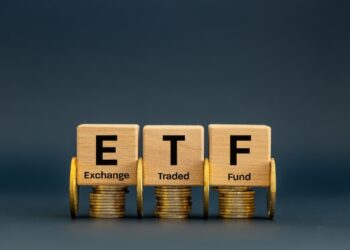Russell Investments’ annual 2020 Value of an Adviser report found that the tax-effective investing benefit advisers provide to clients could add at least 1.5% p.a. to a client’s returns – representing a significant part of the overall value advisers deliver to clients.
Tax has often been viewed as the realm of accountants. However, many advisers provide expertise on managing and optimising investment tax and do so with the help of managed accounts.
Financial advisers can help clients make tax-savvy decisions through structural tax recommendations. This refers to being intentional about location and flow of a clients’ assets based on the tax rate of different structures. This may include simple strategies such as salary sacrifice into super, transition to retirement strategies, using tax-paid investment bonds through to more complex strategies. Much of this is business as usual for advisers, but there is an opportunity to point to each of these strategies and highlight to the client the tax smart recommendations as part of their adviser value.
Secondly, advisers can help clients to select tax-smart investment solutions. As many financial advisers know, tax can have a significant impact on asset value and portfolio return. Minimising the ‘tax drag’ on a client’s investments may help them reach their financial goals much sooner.
For example, the evolution of managed accounts now provides advisers with a level of flexibility and optionality on how they can help clients reduce the tax drag on their portfolios. Here we outline some key points advisers and investors should know about managed accounts – what they are, the benefits for advisers and clients and why additional services such as tax management should be given more time in client conversations.
MANAGED ACCOUNTS: THE BASICS
A managed account is a portfolio made up of underlying assets that may include listed individual securities, exchange traded funds (ETFs) and managed funds. The portfolios are managed by an investment solutions partner on behalf of the investor and are accessed via a managed account platform.
Equity separately managed accounts can be an all-equity portfolio managed by an investment manager. The client has the beneficial ownership of the shares, with an investment manager managing and trading the portfolio on behalf of the client. The investor can have their own unique tax parcel history and direct benefits of all income and dividends arising from the investment and tax credits (i.e. franking credits).
Beyond just an equity portfolio, multi-asset managed accounts can provide total portfolio solutions for advisers to recommend to their clients. These can incorporate ETFs for a lower cost approach or managed funds for a more active approach. There are also multi-asset managed accounts that incorporate direct shares, ETFs and an active and dynamic core to deliver a best of breed solution.
A managed account platform provides flexibility for advisers and clients to manage their portfolio. Depending on the platform, there are options to select tax parcels when trading for the client, in-specie current holdings in and out of these portfolios, along with the ability to substitute one share for another or even to lock holdings, meaning that if a manager sells down that position, the client can elect to retain that holding, particularly if they have concerns such as triggering capital gains.
All of these options provide opportunities for advisers to provide additional value add by reducing unwanted or unintentional tax impacts on a client portfolio.
When selecting a managed account portfolio, it is important to consider the tax-smart elements in all components of the portfolio, and to what extent the capabilities of the managed account platform can be utilised.
TAX IMPLICATIONS OF MANAGED ACCOUNTS
Managed accounts, ETFs and managed funds are all portfolio structures, however, fundamental differences exist between them.
Firstly, for direct shares within a managed account, they aren’t pooled portfolios but are held directly by the investor. Secondly, direct equity holdings can be transferred to a managed account, and lastly, investors aren’t subject to any embedded tax liability that may exist in pooled investment vehicles like managed funds.
ETFs are pooled vehicles however, they are often low turnover index strategies, and lower trading can reduce unnecessary triggering of realised capital gains. The secondary market nature of ETFs also reduce the level of portfolio turnover which can further enhance the tax effectiveness of ETFs compared to managed funds.
Managed funds are pooled vehicles, which means that when an investor purchases units in the fund, they are buying into the combined tax experience of the portfolio, and all the trading and activity in the fund. However, it is important to note, some managed funds can implement tax aware strategies that reduce unnecessary trading and reduces potential tax burden on unitholders.
ADVISERS EMBRACING MANAGED ACCOUNTS
According to Investments Trends, around 35% of financial advisers currently use managed accounts. The appetite among advisers for tax-efficient investment vehicles such as managed accounts has grown due to three key reasons:
- Addressing changing client demands, which includes a growing desire for portfolio holdings and tax transparency;
- Cost pressures have prompted advisers to change their advice business model, with a focus on increasing productivity and scalability; and
- Technological advancements and the entry of new, sophisticated platforms have seen the broadening use of managed accounts from purely a solution for high net worth clients.
In Australia, the managed accounts sector was worth over $71 billion in funds under management, as of 30 June, 2019.
We expect managed accounts to become a core offering as pricing of platforms becomes more competitive, and advisers and clients continue to realise the benefits.
How can an adviser help a client’s portfolio be more tax effective?
We believe it may be rare for a client to proactively ask their adviser for a managed account portfolio. This is about building a mindset when working with your clients on helping them articulate and identify their needs and delivering solutions to meet these needs.
Firstly, advisers can help identify what are some tax-savvy decisions that can be made today, but also into the future as the client’s personal wealth grows. How can you help a client build a solid foundation for today, that is flexible to adapt for future needs?
A multi-asset managed portfolio may provide a total portfolio solution that provides transparency, direct share ownership while also being cost effective. Advisers can highlight the tax-effective choices in the type of portfolio and platform being recommended and how that may meet today’s needs.
As the client’s wealth grows or their needs evolve, there is an opportunity for the adviser to elevate the service offering to more bespoke and pro-active tax management of their portfolio. Advisers may also want to consider a best-of-breed approach to maximise the tax-smart opportunities for their clients.
How can an adviser provide comfort and confidence in what is in a client’s portfolio?
By holding the beneficial ownership in the underlying assets, and through improved reporting via platforms, investors and advisers have a higher level of transparency over the assets and investments held. Ultimately, this enables clients to become more engaged with their investments, translating into more sophisticated adviser-client conversations.
How can advisers benefit from using managed accounts?
Business efficiencies: Managed accounts allow advisers to set the investment objective together with clients upfront, leaving the portfolio to be rebalanced without having to provide additional advice. This creates future practice efficiencies, as advisers don’t need to seek permission every time a portfolio change is made or perform individual trades to get clients in and out of a particular stock or get caught up in time-consuming corporate actions.
Reduce compliance burden: Advisers are under increasing pressure to satisfy compliance objectives and licensee obligations, so any scale that can be built into the service delivery for their clients is of huge value. Seven-in-10 advisers identified compliance burden as the top business challenge they face in further research from Investment Trends.
Managed accounts enable advisers to have confidence that all client’s assets are managed professionally with robust investment governance, portfolio updates are implemented fairly and in real time while enabling some levels of customisation for clients that need it.
Broadening the adviser-client relationship: In times of market uncertainty, continued focus on advisory fees and natural customer scepticism about delivered value, having a structure in place that enables advisers to deliver a service that is easy to articulate is very beneficial.
Managed accounts help advisers to be solution-led not product-led, helping to clearly demonstrate how their service is going to help achieve the client’s future wealth and personal goals today and into the future of the advice relationship.
For example, clients who may have part of their assets in a higher marginal tax rate, may require additional support to ensure they avoid unintended tax impacts on their portfolio. Having their assets on a managed account platform for both super and non-super assets provides advisers the ability to demonstrate how they’re proactively managing the tax implications in the portfolio across different tax rates, and therefore the value in higher advice fees for this additional service.
A more customised tax service on the non-super assets could have a bigger after tax impact for these clients and requires more attention. The result is a more transparent conversation with the client around the value of added services and potential additional fees as the client needs change and evolve over time.
From our perspective, many advisers are already making tax-smart recommendations to clients but may not be calling out that component of their advice to clients proactively or effectively enough. Perhaps review your most recent client advice, and think of how many tax-savvy elements of advice you could highlight to clients, and what more could you do?
By looking at the full value equation of an adviser’s services – asset allocation, preventing behavioural mistakes, financial expertise, additional wealth management services and tax-effective investing – advisers can clearly demonstrate the value they deliver.
Tanya Hoshek is head of distribution at Russell Investments.





